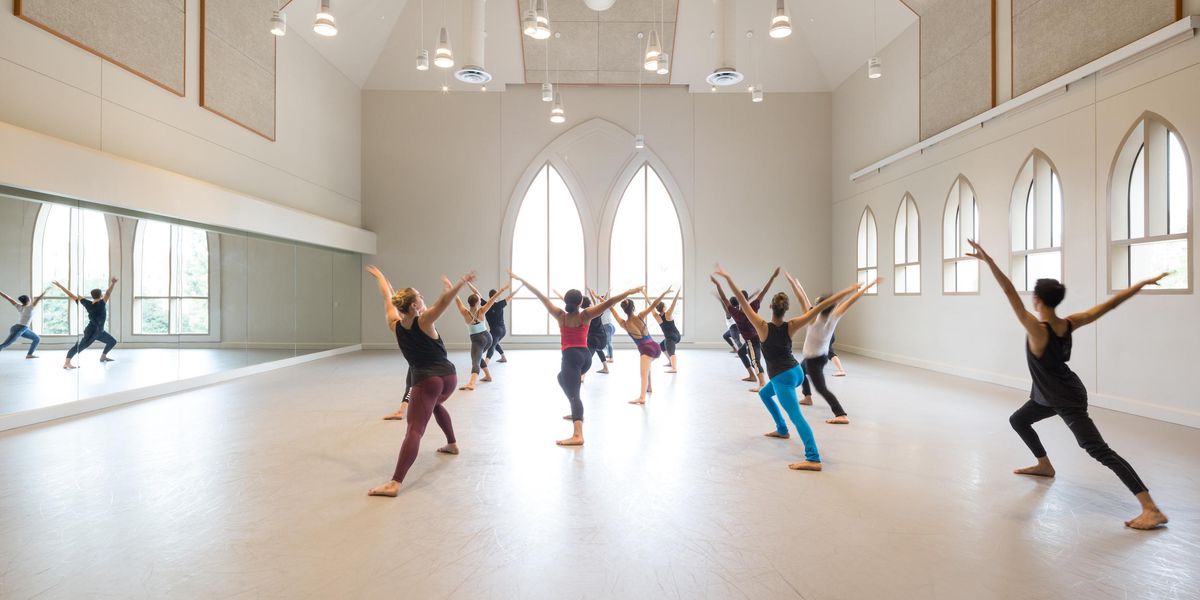2014 Auditions Guide: A Lesson in Etiquette
Landing turns and showing off
extensions are often the main concerns of dancers at auditions. But savvy students know that college dance faculty look beyond technique. Most higher ed auditions include multiple components over the course of a day—technique classes, solo presentations and individual meetings with faculty—and dancers need to put their best foot forward in all of them.
Whether you’re hoping to major in dance at a liberal arts college or enter a more focused conservatory program, faculty members look for dancers whom they want to work with over several years and who seem eager to learn. What can undermine a dancer at a college audition? Being unprepared, unwilling or unresponsive.
Do your homework.
Dancers should be familiar with the audition information that’s on a school’s website, like the materials to bring and what to wear. “If they don’t come in dress code, it tells me that they haven’t really been paying attention,” says Katie Langan, chair of the dance department at Marymount Manhattan College. “And that’s indicative of what my future may be like with that student.” Failing to follow directions is always a red flag.
Ask thoughtful questions.
Before you meet with faculty members, have a sense of the department’s course offerings, faculty and general repertoire. If director Pamela Geber Handman gets a question about the University of Utah’s modern dance department that is easily answered by looking at the website, she doubts a dancer’s interest and commitment. “It tells us that she is not actively involved in her education,” she says. And if you’re asking questions to simply get attention, Langan notes that adjudicators see right through such a ploy. Group question-and-answer sessions are an appropriate time to pose informed questions about the program, but dancers should save specific questions for one-on-one time with a faculty member. Stand out by having an interest in the program, not by trying to steal the spotlight.
Show a sense of maturity.
Auditioners take special notice of how students act during the “in-between” moments: if a dancer is considerate of others at a crowded barre, or if she’s paying attention to teachers before or after combinations.
Talking may not be your strong suit, but dancers need to be able to communicate with faculty and colleagues articulately. Michael Vernon, chair of the ballet department at Indiana University, appreciates dancers who can carry on a conversation if he asks a question or mentions that he knows their teacher. “It makes a good impression when dancers can look me in the eye and talk to me like I’m not an ogre or a terrifying figure of authority,” he says.
And don’t look at yourself in the mirror when talking to faculty: “When you choose to stare at your own reflection and decide not to look at us, we see that you’re not engaged,” Langan says.
Demonstrate good humor and openness.
Faculty want to see that you have a personality, especially because they’ll be working closely with the students in their program. “We are with each other five days a week and also on the weekends when we’re in production,” says Langan. “We have to be able to laugh at ourselves and our work.”
Beware that shyness or nervousness can sometimes be mistaken for disinterest. University of North Carolina School of the Arts associate dean Brenda Daniels looks for dancers who are open to new ideas and styles, and body language is a key indicator. “The kind of friendly and open spirit that choreographers are attracted to is not given off by someone who is standing there with arms folded and a frown,” she warns. Instead, think of an audition as an acting exercise: Put on a smile and stand confidently, even if you’re feeling the opposite.
Meredith Benjamin is a writer in New York City.




